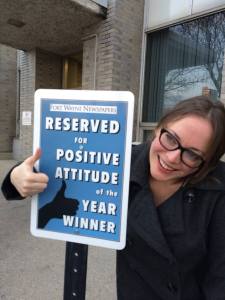I’m writing this on Sunday the 19th, which means you’re reading it on Monday the 20th. April 20. If ever a date deserved the #abandonallhope hashtag, it’s April 20. Very dire portents — Hitler’s birthday, anniversary of the Columbine shootings. Today, the 19th, was the Branch Davidian fire anniversary and the event it ultimately inspired — the Oklahoma City bombing. The Boston Marathon bombing was on April 15, and I cannot tell a lie: I was sure it was carried out by domestic terrorists seeking to make a point about taxes and freedom and the rest of it. Of course, they were domestic terrorists, but not that kind.
It’s a zero anniversary for the OKC bombing. Twenty years. At 20 years, you should understand pretty clearly what led to a tragedy like this, but I’m not sure we do. Anyway, I’m grateful that Hank Stuever posted this piece from his WashPost reporting days, about the father of one of the victims, who chose to forgive Tim McVeigh. JefftMM, you’re going to want to read this, if you haven’t already.
I will admit it: I find forgiveness difficult. I suspect most people do. As a child I picked scabs and I guess I never got over it, but let’s face it: Forgiveness is hard. That kind of forgiveness, to forgive a man who murdered your child? That has to be the hardest kind of all. And the funny thing is, I think I’m fairly good at empathy; it’s what makes people interesting to me. But to use that empathy to get to a place where I can let an offense go? Man, is that hard. So I recommend you read Hank’s piece about Bud Welch, and take its lessons to heart, to the best of your ability.
Here were some key phrases: Finding his way to a mercy he still doesn’t fully understand and “What’s the difference between ‘reconcile’ and ‘forgive’? Really, I don’t know,” he says and I finally realized it was an act of vengeance and rage if we killed either one of those guys. And that was why Julie and 167 other people were dead — because of vengeance and rage. It has to stop somewhere.. I think that’s the hard part. The surrender to something you don’t understand, especially when people like McVeigh haven’t even asked to be forgiven. You just have to do it.
That might be the final lesson of April 19, 1995, as it was lived in Oklahoma City and everywhere else in this country. Which brings us to the other thing I dug up today, also an old piece, from the Observer. It’s about the OKC memorial, which opened with a speed after the event we’ve heretofore not seen in this country. I think Philip Weiss gets to the problem with it:
There are so many symbols here as to obliterate the poetry of any one of them. There are so many faces on televisions inside the museum describing their pain to you that you feel wrung out like a rag. Worst of all, the memorial has nothing to say about the important historical issues that triggered Timothy McVeigh’s madness.
The problem is obvious. “The wishes of the Families/Survivors Liaison Subcommittee are to be given the greatest weight in the Memorial planning and development process,” said the memorial’s mission statement. This was a mistake. The victims’-rights movement has been an important one that has reformed the justice system. But here it has gone too far, and turned a memorial that should address issues of national disunity into a site for the bereaved. When Mayor Bloomberg said recently that he does not want a “cemetery” downtown, he may well have had in mind the field of 168 chairs, which resembles a graveyard and is inaccessible to the general public, roped off on the day that I and hundreds of others showed up by the busload. In 100 years, those chairs will seem meaningless.
Meantime, the memorial declines to show the curious where McVeigh parked his Ryder truck packed with fertilizer. And the National Park Service Rangers who work the site sound like funeral-home workers.
A memorial should emphasize the Who, of course. But if it says nothing about the Why, it fails. I guess Maya Lin’s Vietnam memorial in Washington D.C. began the contemporary emphasis on the Who; while local monuments might carry every name that perished, a national one never did (or rarely did, I’ll qualify; what I’m really saying here is, “I don’t know of one”) until Lin’s tremendously sad wall. Lin is a native of Ohio, but of Chinese ancestry, and the wall has a certain Asian minimalism, the way it starts small and swells to the crescendo of 1968 and then tapers off again. If it had been left alone it would have been perfect, but the usual squawkers started meddling with it, so now we have a row of flags, and the Three Ethnically Diverse Soldiers Looking at It, along with the Don’t Forget the Nurses statuary.
But it’s real legacy is the names. The 168 chairs is a direct result of the Vietnam wall, and I don’t see how you can deny that. Where else would you leave your bouquet of flowers? Who even mourns in cemeteries anymore? I think Weiss’ broader point, that memorials have to be more than just places for flowers and teddy bears, is very sound, though. Time has to pass, sometimes, for that to happen. When I was a Knight Wallace Fellow, we had a seminar one night by the man who chaired the 9/11 memorial committee in New York, and I asked him the too-soon question. He said that was probably true, but hey — New York City real estate can’t just sit around waiting.
Maya Lin did that one, too.
So. New subject.
Did anyone read the story in the New Yorker a few years ago about the guy who was running fake marathons? Or fake-running fake marathons? Whaddaya know, it too is online. A good story about deception and the way it can ensnare a person. Interesting that it happened to be marathon running; remember when Paul Ryan said he’d had a sub-three hour marathon, but “couldn’t remember” his exact time? A friend of mine, who’s run three Bostons, said, “You NEVER forget your time once you break three, or in fact, ever.” He’s right. There’s really nothing like a marathon to encourage obsession, is there? The months of training, the online training diaries, the months of boring your friends with your workouts (“Hey, come back here, I wasn’t finished!”), and finally, the race itself. It really lends itself to lying and deception. So the guy in the New Yorker story is one, and now there are two (that I know of), a woman who crossed the finish line in St. Louis to “win” the women’s race, only not really. It’s funny when you consider bragging rights is all you’re competing for in most of these races, and honestly, a winner’s story isn’t all that interesting. I’ve never heard one, I should say; who knows people who actually win marathons? Those are super-humans who are usually on the next flight out of town and en route to their next training run, culminating in the Olympics or something.
Lying about your marathon performance is like lying about yoga — what’s the point?
So now this weekend, that started out warm and sunny, is closing out gray and chilly. Such is April, but I’m still glad we got a gorgeous couple of good ones before the week begins. We were owed, dammit.
Happy week, all. Let’s get it going.



